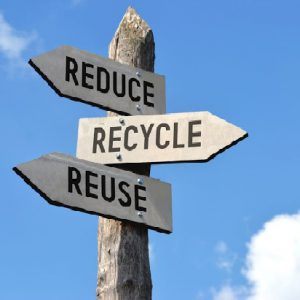New grant awarded to Ohio Wildlife Center will fund initiatives to minimize environmental impact
 The Columbus Foundation has awarded a grant to Ohio Wildlife Center to support initiatives across the organization to improve sustainability, reduce waste from human and animal care activity, and implement energy reduction strategies.
The Columbus Foundation has awarded a grant to Ohio Wildlife Center to support initiatives across the organization to improve sustainability, reduce waste from human and animal care activity, and implement energy reduction strategies.
The project emerged from the organization’s recent self-study on waste use and a new strategic priority to attain the most sustainable use of all property and facilities, according to Executive Director Dusty Lombardi. The self-study benchmarked resource use and waste creation, as well as green building and systems auditing led by environmental consultant Amy Wald of Green Luxe Inc., who is donating her professional services to the project.
The grant will support Phase I of the initiatives, which include:
- Identifying opportunities for resource and energy reduction options;
- Creating organization-wide efficiencies for food inventory and storage;
- Diverting recycling and composting from the landfill stream, and
- Training and educating staff, volunteers and visitors.
 The goals for the first phase also include analyzing waste type, peak load generation and current disposal throughout the organization; establishing a comprehensive color-coded waste separation and diversion program; and, offering instruction and education interpretation opportunities.
The goals for the first phase also include analyzing waste type, peak load generation and current disposal throughout the organization; establishing a comprehensive color-coded waste separation and diversion program; and, offering instruction and education interpretation opportunities.
“This sustainability initiative is a win-win strategic project remaining relevant during this uncertain time,” said Lombardi. “All project outcomes will directly reduce recurring operational costs associated with inefficient energy use and staff time and this will help the organization preserve operating funds,” she noted.
Project activities to install energy efficient LED light fixtures in the Education Center, the Pre-Release Facility and the administrative offices, initiate onsite recycling pickup, and install devices to preserve energy use are designed for immediate cost savings.
“We are hopeful that with training and interpretive signage development, staff and visitors will be able to participate in correct waste disposal and energy and water conservation,” Lombardi added. “This on-site project will serve as a model in the community for public education about adopting sustainability practices and energy conservation.”